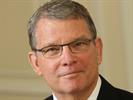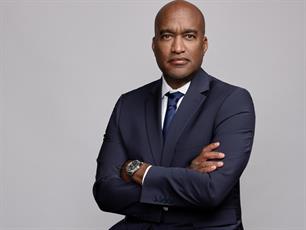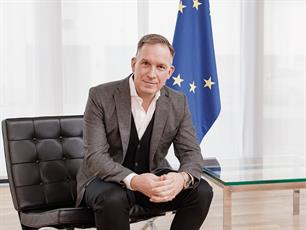Holmes Report 08 Jul 2012 // 11:00PM GMT
This Campaign was coined in response to what has been described as the worst drought in 60 years to hit the Horn of Africa. 12 million people in the region were at risk of severe malnutrition, 3 million of them in Kenya alone. KRC took charge of managing the humanitarian crisis but soon found that it required a much greater magnitude of resources to deal with the situation. It then launched an emergency appeal to the corporate sector for funds and support. In addition to dealing with the immediate crisis, it was also felt that something needed to be done to ensure that such crises do not occur in the future. With the KRC appeal, GDCC conceived a wider platform named Kenyans for Kenya to deal with a matter that was essentially one of national importance. Corporates like Safaricom + KCB Foundation (both GDCC clients ) and the Media Owners Association were also invited to join the steering committee. Thus, for the first time in Kenya’s history, a platform was created where all Kenyans would join hands to support other Kenyans and take matters into their own hands.
STATEMENT OF THE PROBLEM /OPPORTUNITY
The drought emergency presented the team with the opportunity to rally the nation towards a common cause and to reawaken the caring spirit among the Kenyan people. The strategy wasn’t just to mobilize resources for emergency response, but to get the Kenyan people to start thinking long term, through practical action. It was therefore agreed that about half of the total amount mobilized under the initiative would go towards long term initiatives to empower people to produce their own food and get off food aid.
PLANNING PROCESS/PARTNERS:
The Kenyans for Kenya campaign was centered on the KRC who would handle the logistics for the immediate food distribution and intervention in the affected areas. GDCC would handle the communication, publicity and logistics of fundraising and events whereas Safaricom would galvanize the fundraising activities with its money transfer platform MPESA with its 15 million subscribers and use its social media network to spur people into action. KCB had a large branch network in the region consisting of 222 branches. The Media helped in creating awareness and credibility for the campaign and publicizing the call-to-action leading to a massive response from corporates and individuals in Kenya and abroad.
PR OBJECTIVES:
• Increase participation and contribution of individuals, groups and Corporates in providing long-term humanitarian interventions to drought and other community challenges.
• To increase public awareness and knowledge on the extent and magnitude of the famine situation in Kenya, drawing insights and comparisons from past years.
• To enhance factual and in-depth media coverage of famine in Kenya and internationally while communicating sustainability measures to ensure the scenarios do not recur.
• Make a clear comparison between the food surplus regions where a bountiful harvest was being realized and the drought-affected pockets where communities suffered due to the harsh weather events.
• Increase the participation of members of the public, Kenyans in the Diaspora, friends of Kenya and global humanitarian agencies in seeking solutions to the drought challenges.
• Develop and create a reference point to act as a successful example of national action to a local societal problem that can be replicated
• Raise 500 million Shillings in six weeks
• Encourage Kenyans to be responsible for their own Countrymen as opposed to running to donor agencies
• Run the campaign on social media as an awareness and a call to action to do something for our Country
• Appeal to the youth using musicians
EXECUTION: Some of the activities earmarked and executed included;
• Media interviews with the key influencers in the campaign and other strategic partners
• Media/CEOs tours of affected areas to appraise the situation and identify areas that require quick attention.
• Generation of pictures and videos to the various media channels highlighting the famine situation
• Develop testimonials from affected family members, caregivers, local leadership and humanitarian agencies involved.
• Initiate internal communication campaign to interest employees among participating companies to make both financial and material contributions towards the campaign.
• Music and arts concerts to engage the youth and raise funds for the campaign while inculcating in them the culture to support such humanitarian causes.
• Daily and weekly updates on monies collected
• Documentaries and SMS updates
Events/Fundraising activities held to raise awareness include:
• Shop at Nakumatt and donate to K4K (special bar code)
• 6 flag off of food events every Saturday from Uhuru Park
• Corporate Pledge event, Nairobi
• Ladies Fundraiser
• SME Pledge event, Nairobi
• Koroga Pledge event
• Corporate Pledge event, Mombasa
• Grand Concert & Telethon featuring Kenya’s top musicians (another first in Kenya)
• T-Shirts and cap sales – K4K Fridays (all corporates wore their t-shirts on Fridays)
EVALUATION:
• The campaign achieved and exceeded its target of KShs 500 million. Overall the campaign realized over Kshs 753 million. First time for Kenya to raise funds for itself by its people.
• Facebook page–July27-Aug27: 19,313 new likes; 19,157 lifetime likes. 973,496 post views; 19,528 post comments. Likes from 18 countries – Kenya, Norway, USA, Guinea-Bissau, UK, UAE, Uganda, Germany, S Africa, Canada, Tanzania, Australia, Sweden, Qatar, S Arabia, Netherlands, France and Italy.
• Kenyans4Kenya twitter handle – 9,760 followers after 6 weeks
• Total donations received via MPESA (Safaricom money transfer service) was Kshs 167 million from 800,000 unique contributors
• There was a marked improvement in awareness and knowledge about the effect of drought in N Kenya. Total no of articles received was 230 (print), 1562 (radio) and 285 (TV). Total 2077 for 6 weeks.
• Immediate response to food aid: Kshs 114 million was used in purchasing and distributing Unimix: 112 million for the direct purchase and 2 million used for hired transport.
• There was a marked increase in the number of volunteers for KRC from 30000 to 70000.
• All the budget lines were provided pro-bono by participating entities. Auditors came on board led by Deloitte who audited all the funds and food distribution free together with KPMG, Ernst & Young and PWC. Monetary value of this would have been Kshs 18,240,000. Another first.
• Other communities got involved such as the Eritrea Community in Kenya donated 1,000,000
• Wide International coverage and awareness of this campaign
• GE Healthcare launched a ‘Get Fit’ Social media competition to raise funds for 2 months to encourage people to make cancer-bursting lifestyle choices. 700 participants from 55 Countries generated approx 5500 get fit tweets. Kenya garnered the most votes for its K4K campaign – GE matched a $20,000 donation to the KRC
• International Corporates like Google, Coke & Western Union donated over 1 million dollars
• Kenya Airways introduced the campaign on board its flights all over the world where passengers donated their air miles. 60% of its CSR budget for the next 3 years would go to N Kenya water programmes
• This campaign is evidence of how PR can play a major role towards the empowerment of communities in Africa. It defies physical boundaries ands instead, unites individuals and groupings in different areas through a need to serve humanity with dignity.
• The campaign also positions PR in Kenya as agenda setters - in relation to humanitarian support initiatives.
• Countries like Somalia and Eritrea approached GDCC to help in creating their own Somalia4Somalia and Eritrea4Eriteria
• The KRC will invest approximately Kshs350 million in long term sustainability projects that focus on food security and livelihood improvement. This should significantly reduce dependency on food aid in the long term and look at long term food sustainability.


































.jpg)




.tmb-135x100.png)












